Austin, Texas is world famous for its vibrant live music scene, and has a well-deserved reputation for culinary innovation. There is live music performed every day of the week at venues ranging from formal performance spaces to breweries to parking lots. There are scores of highly lauded restaurants offering cuisines from around the world. What happens when two totally lame people like us visit Austin? We skip most of that stuff but still manage to have a great time.
But first, let’s go back to how we got here.
When making our plans to travel through Texas toward Florida, we quickly determined that Guadalupe Mountains, Davis Mountains, and Big Bend NP were the only things we wanted to see in West Texas. This left us with a substantial amount of driving to get to our next spot — 500 miles from Big Bend to Austin, to be exact. Instead of breaking this up into bite-sized chunks, we tackled it in two back-to-back driving days of 350 and 150 miles. Normally we don’t travel more than 200 miles each time we relocate, and normally we stay several days after each relocation, but since we both drive the rig it was easy to cover the flat, straight highway miles of West Texas by alternating driving duties during the longer day. Sometimes it’s just worth it to put in long and consecutive driving days to get to the next spot.
Holiday and Visits with Friends
We arrived in Austin the day before Thanksgiving, so the first thing on our agenda was holiday preparations. Last Thanksgiving we were visiting with Ken’s brother and family, so we didn’t need to worry about procuring a Thanksgiving meal. This year we were on our own, and considered several options including eating out and fashioning our own feast. Our Airstream kitchen is small but efficient, and we might have been able to concoct a whole meal, but I’ve always appreciated being able to spend the holiday doing activities while someone else cooks the meal. Thus we landed on the solution of picking up the entire meal (precooked) from Whole Foods. The only problem with this brilliant scheme is that the smallest portion we could order was “Thanksgiving Meal for Four.” We took care of all the sides (mashed potato, stuffing, gravy, creamed spinach with kale) in just two days but there is really no such thing as a small turkey. Our 10+ pound turkey had us eating turkey for almost the entirety of our Austin stay. You know the drill: Thanksgiving Part II, turkey sandwiches, Cobb salad with turkey and cheese as the main proteins, turkey chili, turkey and cheddar omelets, etc. Despite the turkey overload, we definitely made the right call.
Another item at the top of our agenda for Austin was meeting up with several friends who live in the area, and they graciously invited us over for meals. On a sunny Sunday we headed out to the suburbs to see a former colleague and business partner of mine who relocated to Austin with his family this spring. Although we tweaked Mike and Amy about their Texas-sized house, after living in a 1,200 foot historic home in Florida it was a real revelation for them to move into a place where each of their four boys could have his own room, with a guest room for grandparent visits. More important, their drool-worth kitchen produced homemade pasta slathered in homemade pesto (with turkey, of course!) that was out of this world. We also met up with a couple we met volunteering with Habitat for Humanity in Pagosa Springs this summer. Larry and Patricia have a vacation home in Pagosa, but instead of relaxing there Larry spends every summer as the assistant head of construction for the local Habitat affiliate. We enjoyed killer ribs and grilled veggies in their comfortable downtown home while hearing their favorite things about their hometown — they are much less lame than us, so their stories involve lots of music and other activities.
LBJ Presidential Library
After being wowed by our first presidential library, the Truman library in Independence, Missouri, one of our must-do items in Austin was to visit the Lyndon Baines Johnson Presidential Library on the UT campus. Unfortunately this library didn’t really measure up, despite having a very interesting and complicated subject to work with. LBJ of course became president after the assassination of John F. Kennedy, and while he might have lacked the charm and panache of JFK, this man knew how to work. He famously worked 18-20 hours every day, and after succeeding to the presidency he used all his powers of persuasion to push though an ambitious legislative agenda. LBJ was re-elected in 1964 by the biggest landslide in modern history, and used that popular support to continue aggressively implementing his Great Society program, which touched just about every aspect of American life. He viewed it as the natural extension of Roosevelt’s New Deal, but it was more far-reaching than anything even Roosevelt could have imagined.
Think the Affordable Care Act was a big deal? LBJ was at the helm when both Medicare and Medicaid were conceived and enacted. Concerned about civil rights? LBJ brokered the passage of the Civil Rights Act, the Voting Rights Act, the Fair Housing Act, the Age Discrimination in Employment Act, and many others. Think the nation needs to invest in educating the population? Great Society legislation established everything from Head Start to Pell grants to public broadcasting. Want to improve citizens’ access to government? LBJ’s legislative program including the still-critical Freedom of Information Act and the first legislation that required federal building to be accessible to people with disabilities. Concerned about the environment? LBJ created 36 new national park sites, signed the Clean Air Act, signed the first federal bill protecting animal rights, and his Wilderness Act irrevocably protected 10 million acres of public land from future development. All this went on while the US immigration system was massively overhauled to reduce discrimination against people from places other than Western Europe, and LBJ was strongly supporting NASA (which he helped create) in the space race. The Great Society program was completely transformational in virtually every aspect of American life.
There is also an interesting story about LBJ’s meteoric rise and fall; he went from overwhelming popularity in the 1964 election to not even seeking his party’s nomination in 1968 thanks to the morass of Vietnam. Our favorite part of the library was the integration of audio material. LBJ famously spent enormous amounts of time on the phone communicating with government officials, members of Congress, and members of the public, and he taped thousands of these conversations. We enjoyed using the library’s ubiquitous phone displays to listen to various conversations including between LBJ and J. Edgar Hoover (dealing with murdered civil rights workers in the South), Secretary of the Interior Stewart Udall (how to increase the budget for parks), and the wives of Apollo 8 astronauts (congratulating them on the successful trip around the moon and back). What we learned: the man could really talk. At length. No one else could get a word in edgewise!
Though LBJ’s accomplishments were impressive, overall we found the library disappointing. There was very little information about his family and upbringing in rural Texas and how that shaped his views. How did a man who grew up with segregation and who was a true (Democratic) party man become such a strong proponent of civil rights? There was surprisingly little coverage of LBJ’s service in World War II, even though he was a sitting member of Congress called to active duty three days after Pearl Harbor. More significant, there was basically no mention of the controversies that seemed to constantly surround him, from controversy over the awarding of his Silver Cross in WWII to controversies over voter fraud in his first Senate election to allegations of bribery of his staff. The library really seemed to shy away from anything that might cast a negative light on the president instead of facing the issues head on.
Even more sadly, Lady Bird received little more than passing mentions from time to time, despite being one of the more capable and influential First Ladies. She parlayed her personal inheritance into a miniature media empire of radio and TV stations that represented the vast majority of the family’s wealth. She bankrolled LBJ’s campaigns, ran his Congressional office when he was on active duty during the war, and ultimately became the very first First Lady to campaign for her husband independently, to advocate for legislation, and to run her own press office separate from the president. This woman deserves her own displays at the presidential library, and not something asinine like a collection of hats she wore on important occasions.
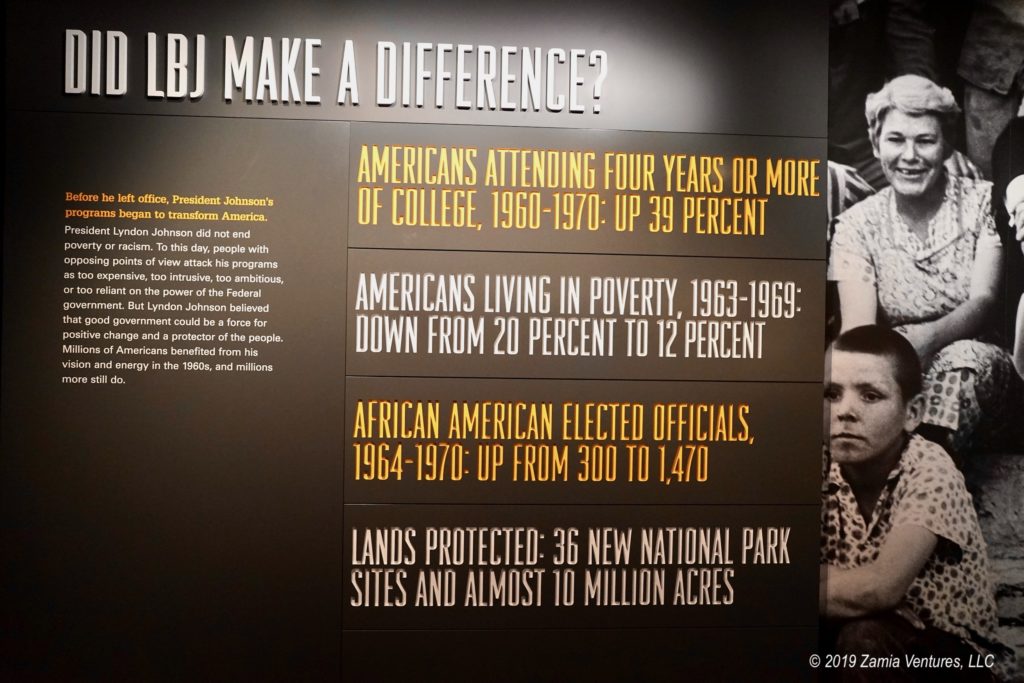
We had planned to take a day trip out from Austin to the LBJ National and State Historic Parks, which preserve Johnson’s ranch in the Texas Hill Country along with some ancillary buildings like his boyhood home in Johnson City. However, the Texas White House (the main house at the ranch) is closed indefinitely because of possible structural problems, so with the main attraction shuttered we skipped that side trip.
Gardens Galore
Austin is home to numerous gardens, so we visited a few that participate in the reciprocal access program of the American Horticultural Society. Our first stop was the Ladybird Johnson Wildflower Center, AKA the Botanic Garden of Texas. December is not an ideal time to visit gardens, and naturally we didn’t see any of the famous Texas bluebonnets or other wildflowers in bloom. But the Wildflower Center is still remarkable, in part because it is landscaped entirely with Texas native plants. There is a lot to work with, since the terrain of Texas includes everything from the deserts and chaparral of the west and south to the moisture-loving swamp plants of the Gulf Coast, and the plants are complemented by Texas architecture. Buildings around the campus are either made of native limestone or sport ranch-style metal exteriors, and there are quite a few eye-catching outdoor sculptures.
The weather was perfect (sunny with temps in the 70s) and the lovely but muted inflorescence on the many native grasses waved hypnotically. The one disappointment was the oak collection. Texas is home to the largest diversity of native oak trees, and the arboretum at the Wildflower Center features 53 different species of oaks. There is also an interesting “Hall of Texas Heroes” featuring oaks descended from some of the famous trees around the state, like the Treaty Oak and the Goose Island “Big Tree.” I was really looking forward to seeing a collection of majestic oaks, but failed to take into account that the arboretum is a relatively new project. So instead of seeing towering trees, we saw a collection of spindly saplings and shrubs. Oops. We’ll have to mark our calendars to return in 40 or 50 years, when this arboretum will be truly awe-inspiring.
The other garden we visited was the Umlauf Sculpture Garden. American sculptor Charles Umlauf was a well-regarded artist as well as a faculty member at UT for 40 years, and donated his home, studio, and many pieces to the City of Austin. The resulting sculpture garden is a little jewel of outdoor beauty located just south of the river. In Umlauf’s long career he worked in many media and devoted significant attention to works involving animals, religious figures, and classical themes. But Umlauf came into his maturity as an artist during the tumultuous middle of the century, and I most appreciated his haunting sculptures from the 1940s depicting refugees and other people who suffered during wartime. Seeing the works in a natural garden setting with trees, ponds, and waterfalls made them come alive in a way that would be impossible in a sterile white box gallery inside a museum. We just loved our visit to this small but evocative garden.
Downtown Austin
After wandering through the Umlauf we set out down the adjacent hike-bike trail for an urban hiking adventure through downtown Austin. One of the true jewels of Austin is its extensive public access to the waterfront along the Colorado River (the Texas one, not the one from Colorado) consisting of a series of public parks linked by 10 miles of hiking and biking trails and pedestrian bridges across the river. We checked out the busy but eminently walkable downtown area, including the historic Driskill Hotel and the gigantic Texas State Capitol building. We admired the diversity of food trucks crammed into every available space. And of course we could not visit downtown Austin without making a stop at the Mother Ship, the corporate headquarters of Whole Foods (our very favorite grocer) with the flagship store on the ground floor. We spent a while checking out the products, the shelf displays, and the scanning/checkout tools to see what innovations may soon be coming to a Whole Foods near us.
McKinney Falls State Park
Where were we parked during all this? At the lovely McKinney Falls State Park. Our site was enormous and surrounded by trees, so it was very private, and like most Texas state parks it was a total steal at $20/night. The park is a mere 15-20 minute drive from most things in Austin and had about 10 miles of trails which we explored on several different hiking days. We loved the access to hiking from the campground, the big oak trees, and the charming little creeks and waterfalls located around the park. Hikes were very level, and after all our mountain climbing this year we were pretty excited to walk normally again. The location was a perfect combination of outdoor amenities and access to the urban amenities of the city.
While in Austin we also took care of some necessary work on the truck. It had a much-needed oil change, and after 45,000 miles of highways, bad roads, gravel roads, rain, sleet, snow, desert heat, elevation changes, and lots of towing, the truck now has a brand new set of tires. We did plenty more things in Austin, and really loved the vibe of the city. It was actually the first place we’ve been in almost two years of travel that we could both easily see ourselves living. But this post is already too long, so sadly there is no room to cover:
- How notorious conspiracy theorist Alex Jones brought an armored para-military vehicle to the Ford dealership for an oil change while our truck was in for service (Google “Terradyne Gurkha” for pics)
- Why the inscription on the Confederate monument in front of the Texas Capitol is wrong in every possible way (and I have examined plenty of Confederate monuments)
- How I randomly passed a friend from law school while walking on the hike-bike trail along the river
With new dancing shoes on the truck, after this busy stay it’s time for us to dance on down to San Antonio for a quick stop before hitting the Gulf Coast.
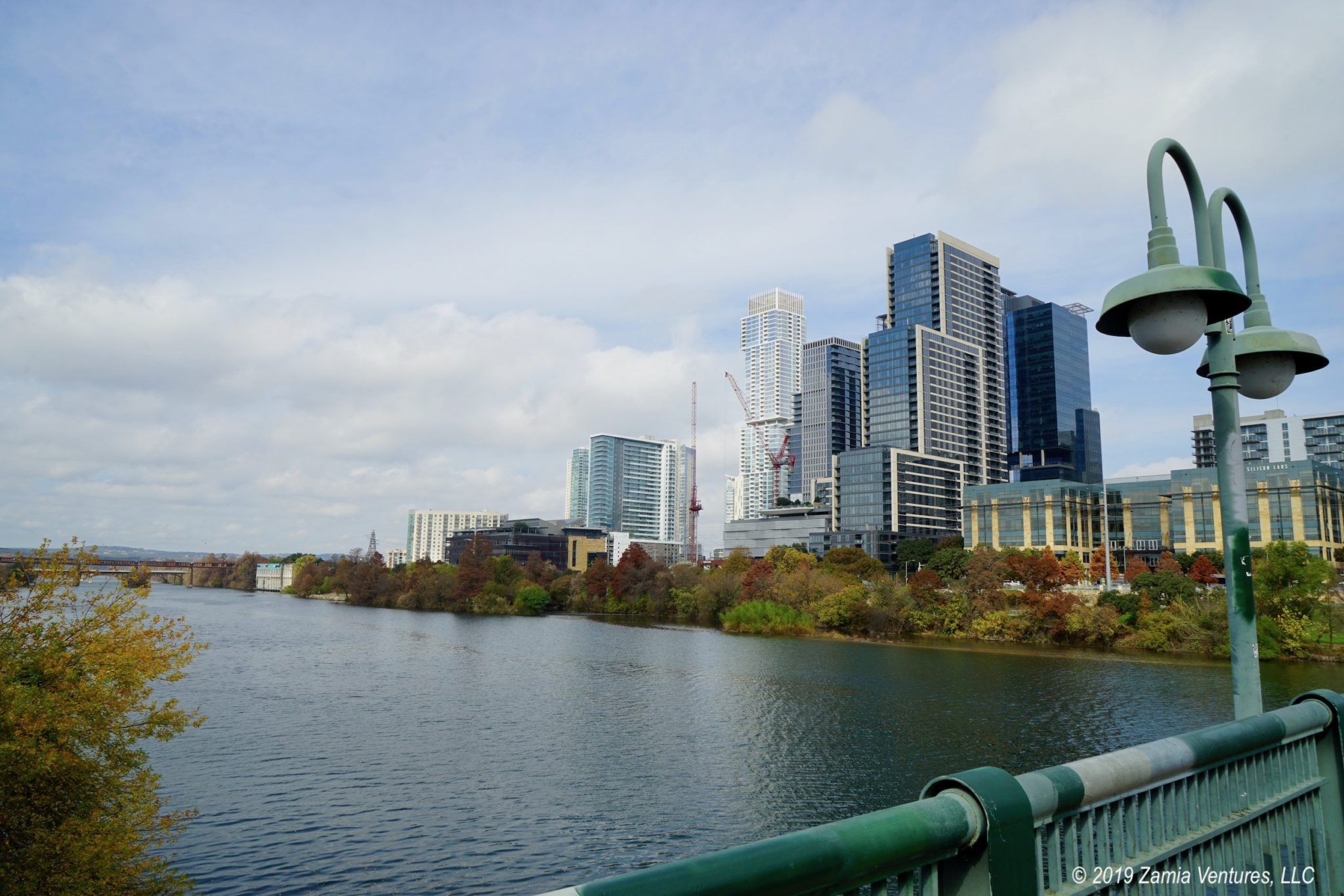
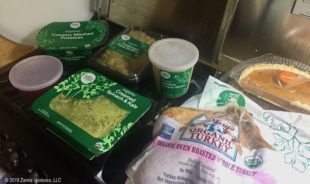

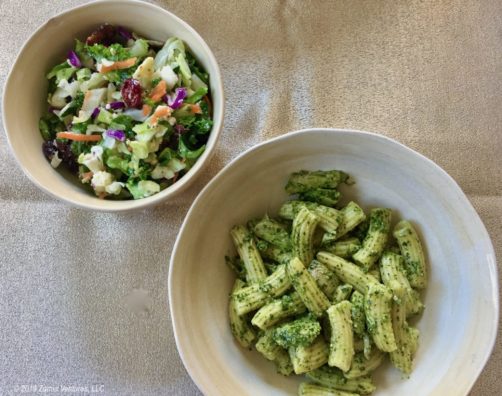
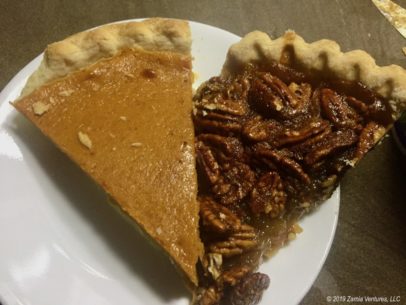

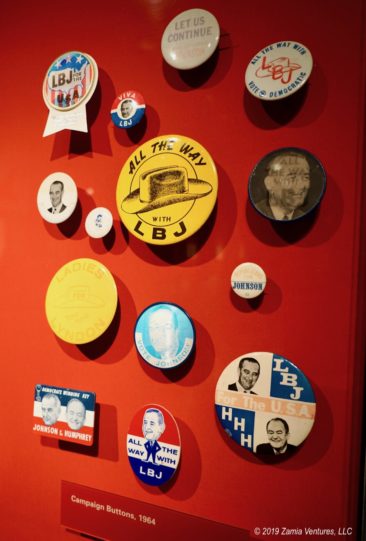
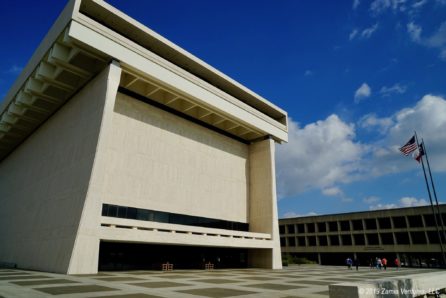
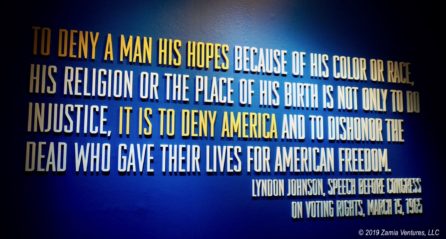
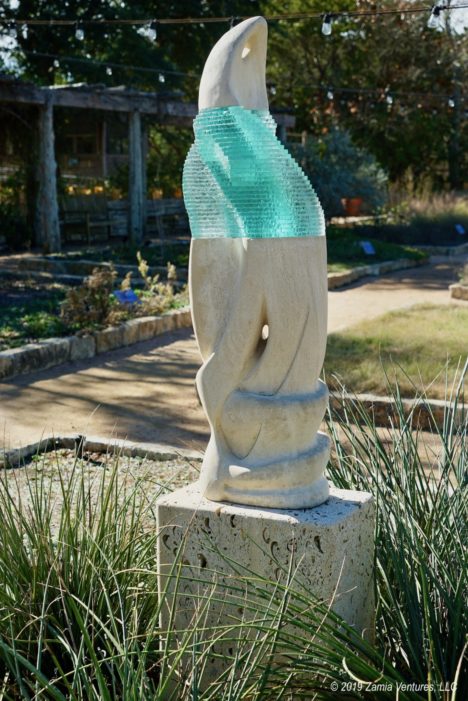
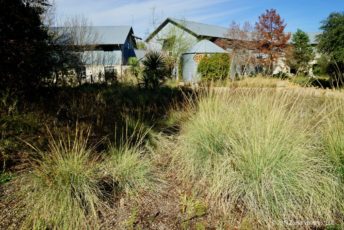
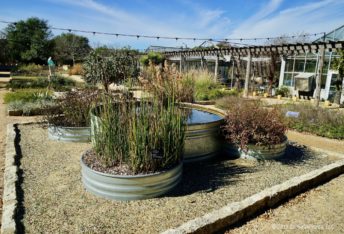
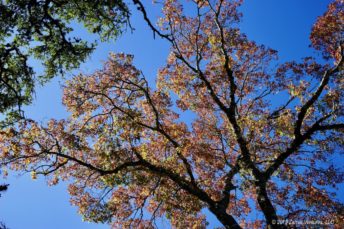
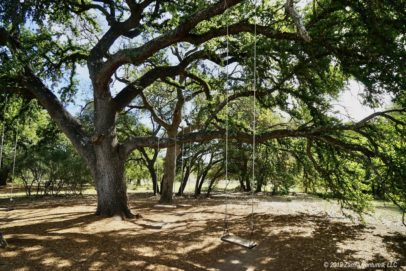
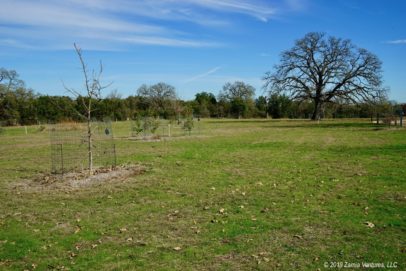
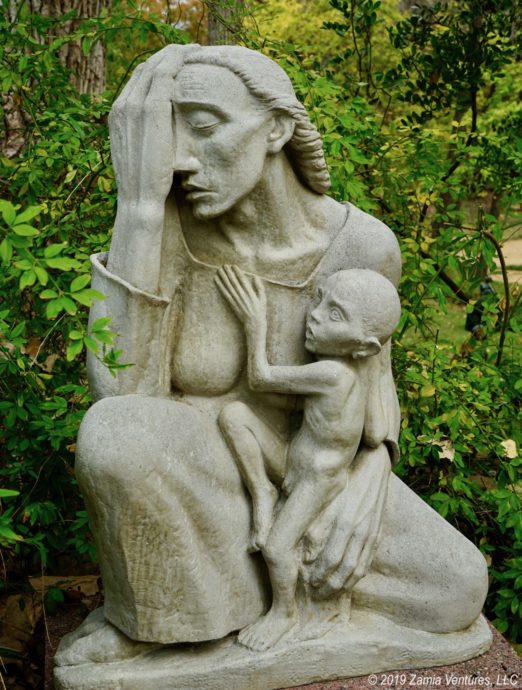
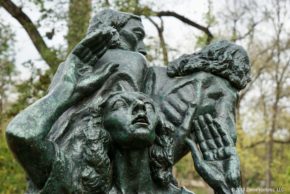
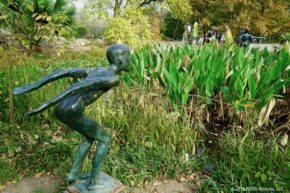
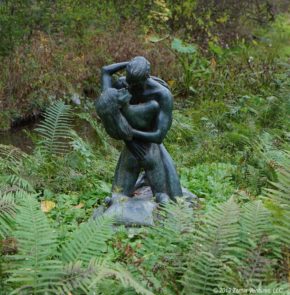
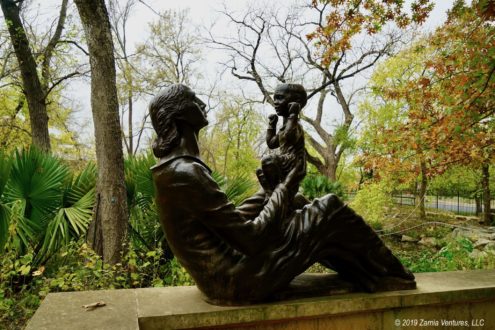
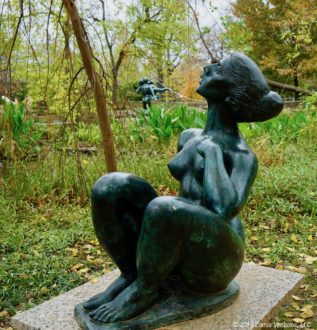
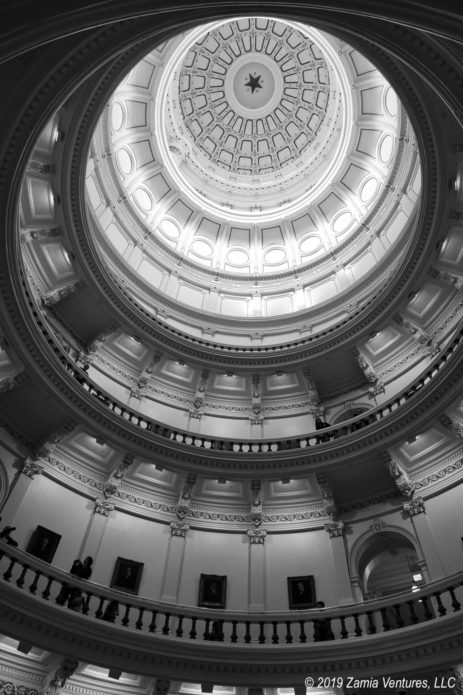
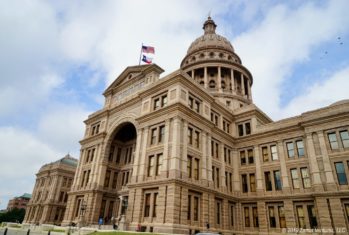
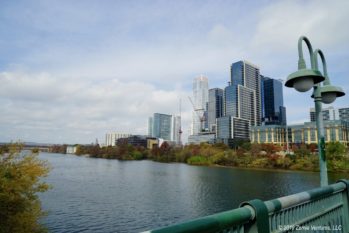
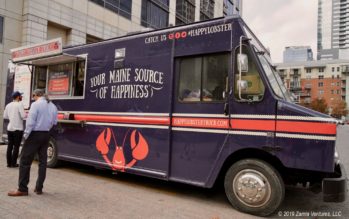
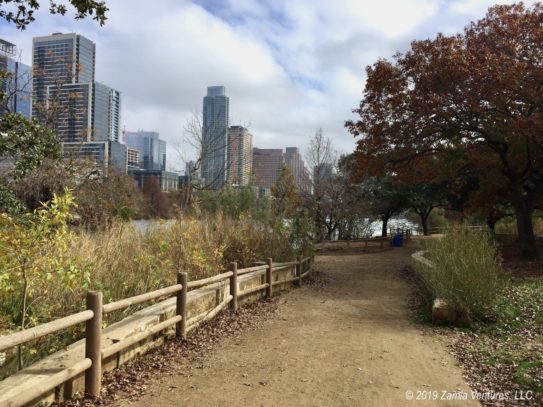
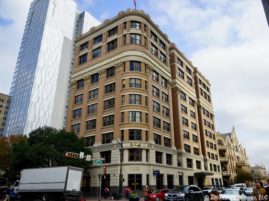
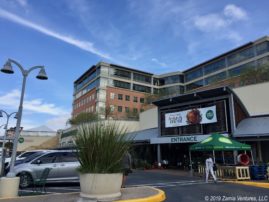
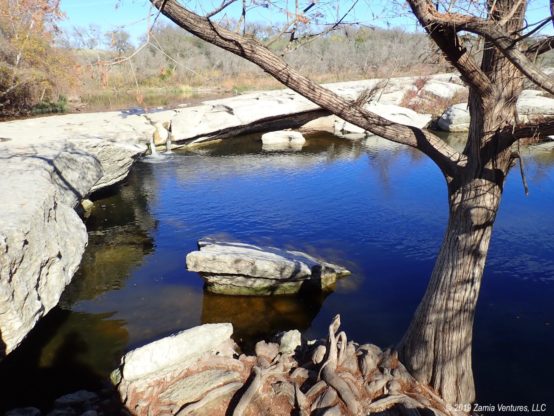
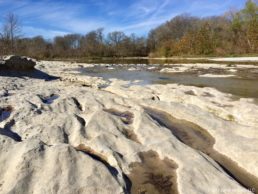
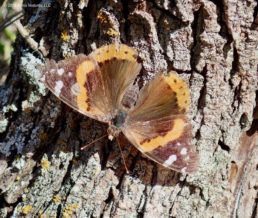
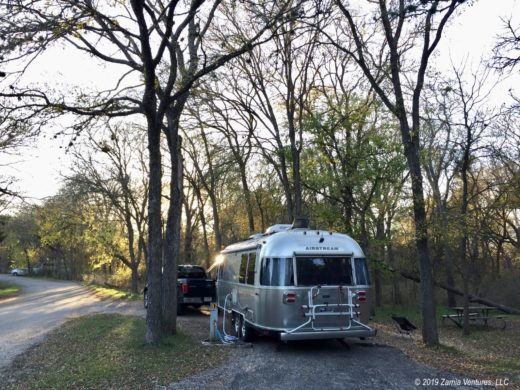
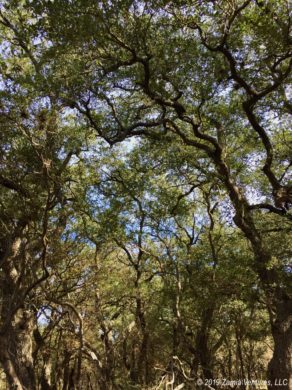
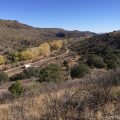
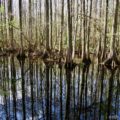
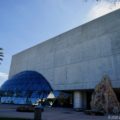
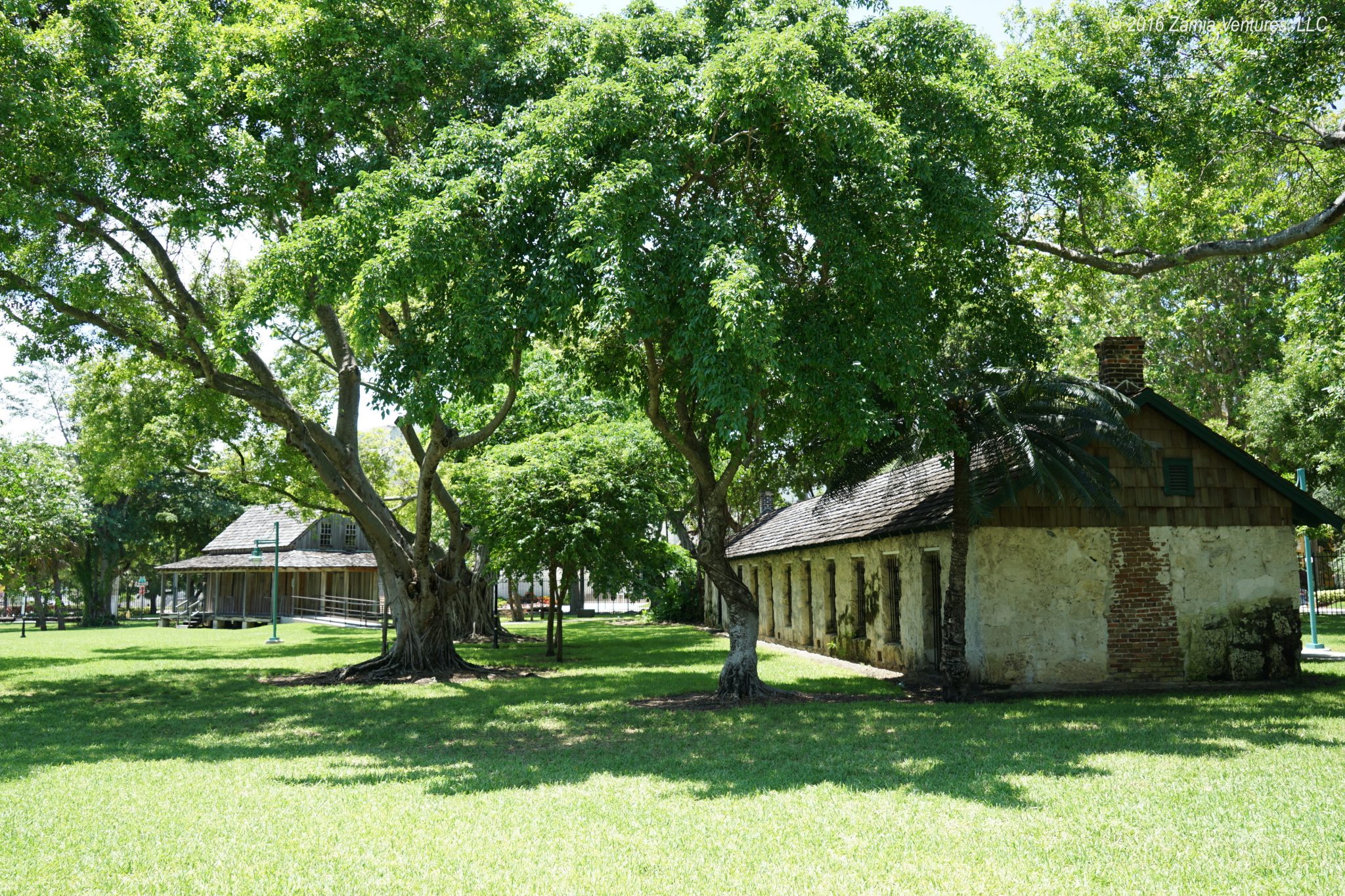
Well, for a supposedly lame visit, you certainly did a lot of cool stuff (I’m definitely gonna track down that sculpture garden when we return this Spring). We, too, have been blowing through our mileage limits recently. We’ve found that, sometimes, we are all too happy to just rip the Band-aid off and get it done – especially in places like Texas and Florida where the driving is easy.
Your time in Austin sounds fabulous. It’s interesting to read your write up about the LBJ Museum. I’ve been to a number of those now, and they are all different. Some really focus on the subject’s upbringing, while others barely mention it. I wonder if that’s a reflection of how much each of them accomplished in their presidencies, or if LBJ’s museum designers perhaps figured people who were interested in his early history could find that at the other nearby facilities. Either way, I too was impressed by all his administration accomplished, and I’m with you on the museum’s treatment of the First Lady. Hats? Really? Come on, people.
As for Alex Jones, I’m not saying “I hope he gets run over” by his Terradyne Gurkha, but I would lose no sleep over such an occurrence.
Austin seems to have something for everyone, even people like us who go to bed early. 🙂 We also loved our campsite and had great weather, which really helps make everything seem rosier.
I think the Johnson library was designed to be more of an archive / records repository rather than a museum about the man himself. The amount of space that’s off limits to the public and dedicated to records would suggest this is true, at least. I suppose that’s a reasonable approach to take, but I think the public museum part of the space got short shrift. It was still interesting to visit, especially with all the audio material that was available to listen to.
The funniest thing about the Alex Jones armored car is how Ken and I encountered it in different ways. Ken was outside looking at other cars, saw the Gurkha come in, and thought “What kind of a madman would drive something like that??” Meanwhile I was in the customer lounge reading a book, and Jones’s lackey was in the waiting area on the phone complaining about his boss’s latest antics, and I thought “What kind of a madman does this guy work for?” We put it all together afterwards.
Austin is a cool city, and it looks like you had a wonderful time there (even without partaking in the music/culinary offerings, which are kind of overwhelming to choose between). We skipped the LBJ library on our two visits because we spent so much time at the LBJ ranch and in Johnson City.
I feel certain you would enjoy both. We learned about LBJs childhood and what fueled his agenda (he grew up without electricity or running water and was educated in a one-room schoolhouse). We thought we would swing by for a brief visit, which turned into an entire, utterly absorbing day. And we also learned more Lady Bird and some of her remarkable contributions. Plus, there is the totally cool Sauer-Beckman living history farm next door. So if you ever get back that way…
Although we’ve spent a lot of time on the bike trails and in the parks in Austin, we bypassed the Umalof Sculpture Garden, which I now see was a mistake. It looks wonderful. On our list for next time! And McKinney Falls State Park looks gorgeous! We’ve stayed at funky little Pecan Grove both times we’ve visited Austin, but now you make me want to stay at McKinney.
I am sure we will be back in Austin, and a visit to the Johnson Ranch will be in order. Hopefully the main house will reopen soon, since I would really like to see that. We did drive right by the ranch on our way into town, and it would be interesting to combine a visit there with some stops in the very surprising Texas Wine Country around Fredericksburg. We have been very pleasantly surprised by Texas so far!
We highly recommend camping at McKinney Falls, especially in the loop with only 30 amp power. The sites are absolutely enormous and very well spaced out. There are no restaurants or other attractions within walking distance but drive times to any Austin destinations are very reasonable.